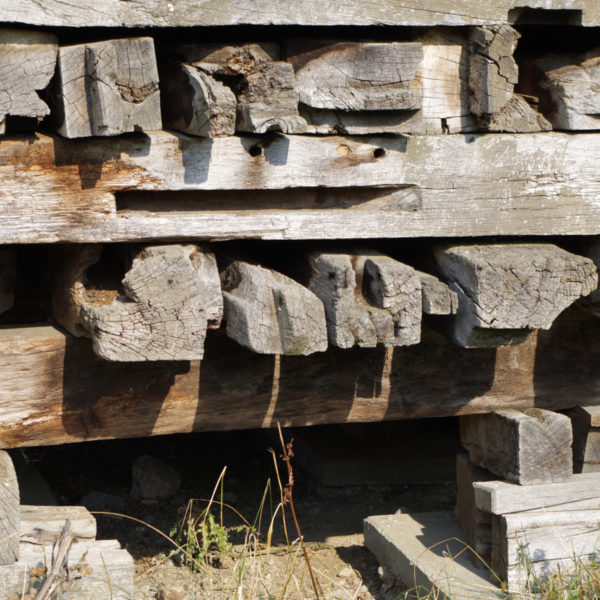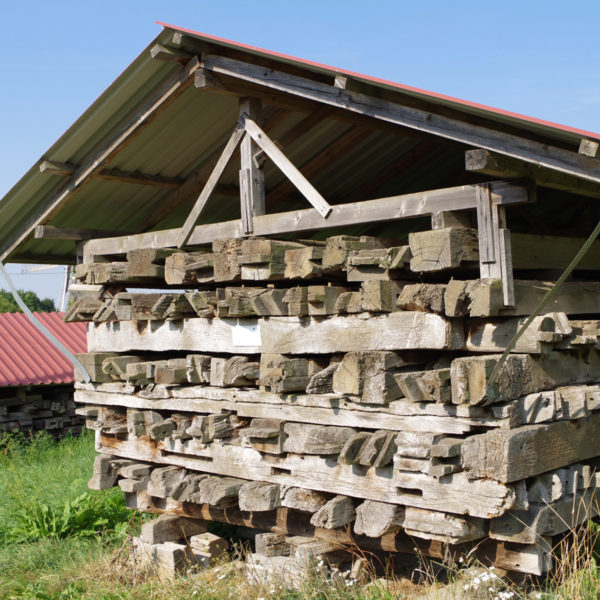Historical Buildings in Storage

Since the foundation of the Open Air Museum in 1974, there have been various exhibition concepts for the several ensembles. In the first period of construction in particular, up to the end of the 1980s, many historical dwellings, farm utility buildings and workshops threatened with demolition or dilapidation were taken to the museum. Of the 222 historical buildings in the museum’s possession, 109 have been rebuilt and are open to visitors at present. The other half is stored in stacks dotted throughout the museum’s grounds. They have been kept in this decentralized manner since the summer of 1999. Back then, the stacks were taken to the ensemble locations where they were intended to be reassembled to give visitors an insight into the plans for setting up the various buildings.
Over the years, however, it turned out that the original plans of the museum were more ambitious than feasible. From where we stand today, the reassembly of such avast number of historical buildings does not make sense for economic and operational reasons. The fact that conservational demands of documenting the disassembly of historic buildings, the technology of transporting such buildings to the museum (for example total or partial translocation), and investigating the histories of their inhabitants and their uses in their original sites have undergone significant development is an even more important aspect in this regard. Such requirements need to be met if a historic building is to be reconstructed in a museum nowadays.
Today, many of the building stacks are in the way of renovation work on the already reassembled buildings and of necessary landscape gardening measures. Moving a building’s timber and other components is work and personnel intensive and extremely costly. Since the winter of 2010/2011, a central storage unit on the northern edge of the Open Air Museum has been established. All buildings in storage which might be considered for reassembly or which will be preserved thanks to their unique features will now be moved there. While being relocated, all timber elements are inspected and evaluated to establish if they are complete and what, if any, preservation and restoration measures they require prior to reassembly.
When exhibition concepts are generated for the various ensembles, the museum also investigates whether the building intended for reassembly, in fact, meets the contemporary scholarly requirements. If this should not be the case, the museum explores the possibilities of passing individual building stacks on to other open air museums or returning them to their previous owners or the municipality of origin. This is done in strict adherence to the codes of the International Council of Museums (ICOM) and the Deutscher Museumsbund (DMB, German Museums Association) for sustainable collections and the transfer of museum artefacts.






